Wagamon’s Pond, a scenic pool on the west side of Mulberry Street, has gone by several names in the past two hundred years of its existence. A little explanation of the origins of the pond will help shed light on these names have come into use.
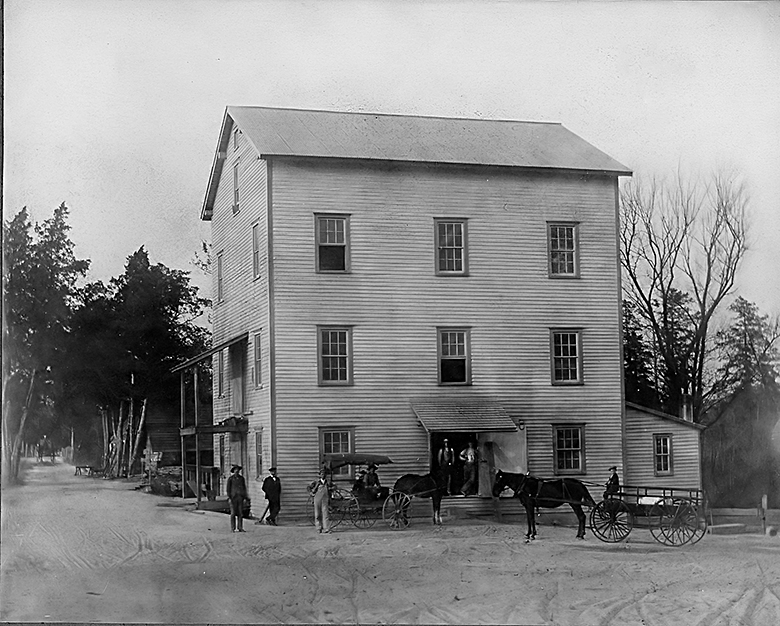
A number of articles by the local press in the last few years have made the point that Wagamon’s Pond is not a natural pool; it was man-made, back in 1815, specifically to power a grist mill on what is today Mulberry Street.
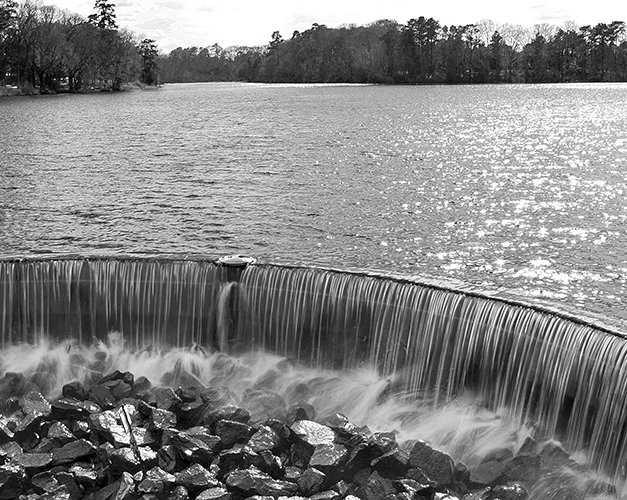
The dam spillway that is visible today on the west side of Mulberry Street, on the Mulberry Street bridge over the river, is the same one that was built in 1815 as part of the mill project. The business partners who obtained the controversial charter from the state legislature – William W. and John S. Conwell, and Dr. Joseph Maull – inundated 52+ acres of white oak forest, nearly all of which they already owned, to form the “lake” we now call Wagamon’s Pond. There was considerable opposition to the granting of the charter from owners of existing mills nearby and other property owners. One argument was that the 52 acres to be inundated were white oak forest, which provided a material that was prized by ship builders. Another argument was that there were already eight sawmills and eight grist mills within a four mile radius of the proposed site. Petitions were submitted expressing the fear that the mill pond would create standing water that would produce a foul odor a well. Nevertheless. the charter was approved.
A two-story grist mill was built close by the dam, and operated into the 1890’s. Through 1868, as shown on the map from the Beer’s atlas of that year, the pond was know simply as “Mill Pond,” and did not receive any other official designation. It was also known to locals as “Paynter’s Mill Pond,” after the Paynter family acquired the mill in 1846. However, there is no survey or map that confirms the use of the Paynter name. We may thus consider it a familiar local term for the pond rather than an official geographic designation.
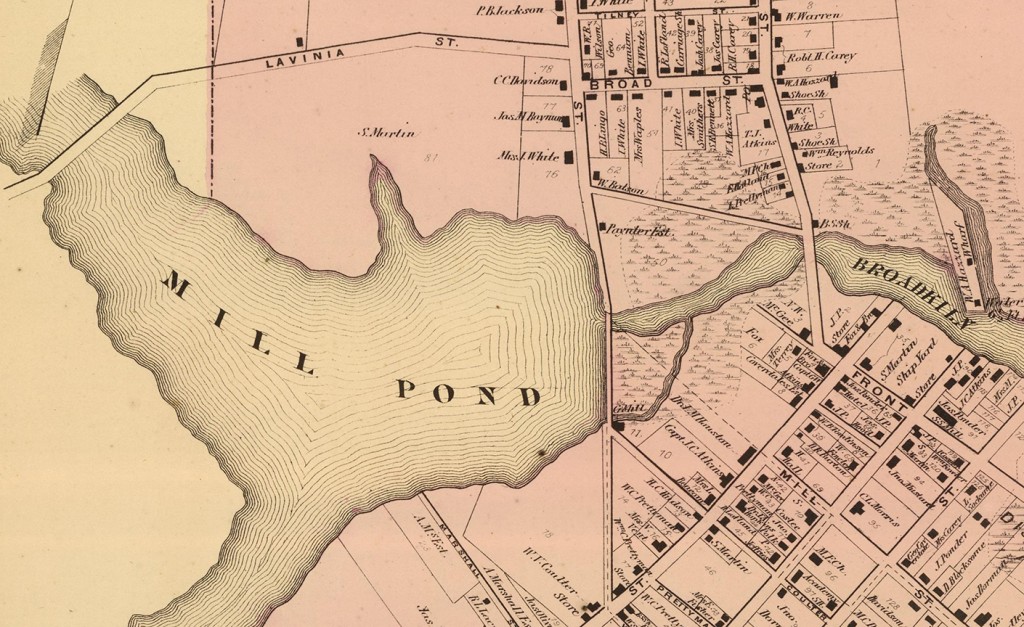
The Paynter heirs, Edwin R, Rowland C., and Hannah E. Paynter and Emma R. Wright, conveyed the mill property to John T., Hamilton K, and Daniel Wagamon by deed dated September 20, 1901. The Wagamons had been operating the old mill since 1898, but after acquiring the property, which included several tracts of land, tenant houses, the old grist mill and sundry other items for $1,100.00 in 1901, they demolished the old structure. On November 1, 1901,David A. Conner wrote:
Paynter’s old mill, recently purchased of the Wagamon Brothers, has been torn away, and a new one on modern principles will be erected on the old site.
The Wagamon brothers undertook the construction of a massive new four-story mill with modern rolling equipment. In the December 20, 1901 Milton News letter, David A. Conner wrote:
J. H. Davidson, contractor and builder, is building the mill house for the Wagamon Brothers. The frame is raised and it is a heavy one. The building is 36×40 feet, and three and one-half stories high.
J. H. Davidson was the same contractor who would later enlarge the Milton Methodist Protestant Church building (today’s Lydia B. Cannon Museum).
The photograph of the mill shown at the top of this posting is one of the earliest and least damaged pictures of the first mill built by the Wagamon Brothers; it was taken in the 1900’s. From a meticulous list of expenditures kept by Daniel Wagamon, we know the new mill cost approximately $2,000.00 to build, including the milling equipment and turbines; with the cost of the acquisition of the property, the total paid by the Wagamons to get the new mill operational was a little over $3,100. The new mill was assessed at a value of $4,000.00 by 1904. A few years after its completion, Hamilton and his brother William bought out John T.’s shares and became co-owners of the mill.
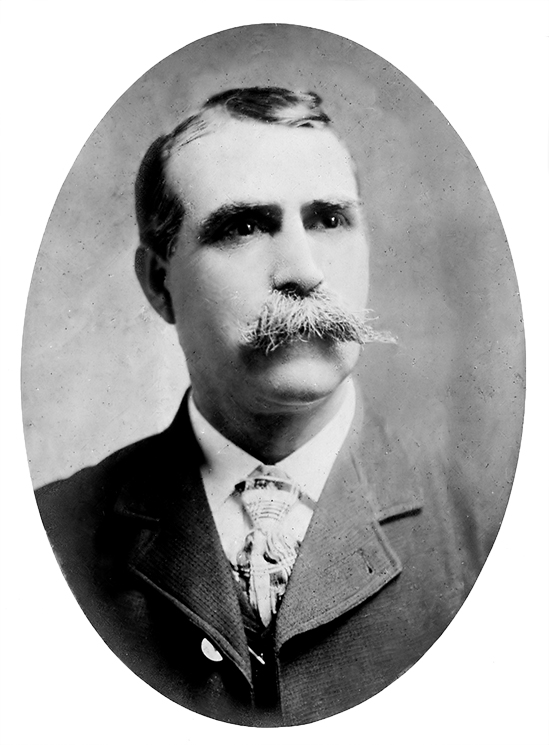
The Wagamon brothers were astute businessmen. David A. Conner writes, in his Milton News letter of April 18, 1902:
The flour mill of the Wagamon Brothers is now doing its best work. Harry Robinson, under whose charge the work is done, is an adept in the milling business and the pond has a full head of water, and when this fails, a plenty of steam can be raised. All of these facilities and conveniences, combined with a good market and ready sale for all of their manufacture, and plenty of custom work beside, makes this mill a paying one to its owners. The Wagamon Brothers made a decided hit when they built their mill in Milton.
Sometime after the Wagamon brothers acquired the mill property and built the new mill, the pool began to be called “Wagamon’s Pond” interchangeably with “Mill Pond” and “Paynter’s Pond.” As last as 1953, a Sussex County highway map uses the name “Paynter’s Pond” to identify the pond, and all three names appear in news articles and documents throughout the Wagamons’ ownership. The new mill continued to be a commercial success until it burned down in 1943. It was replaced by the Diamond State Roller Mills plant, which operated from 1946 to 1958. At that time, the mill changed ownership and continued to do so through the 1960’s. By 1972, the structure was a safety hazard. and the local fire department demolished it by burning it down.
Of the original three Wagamon brother who established the business in 1901, we have one portrait: that of Hamilton K. Wagamon, familiarly known as “Kirt,” who married David A. Conner’s daughter Hettie.
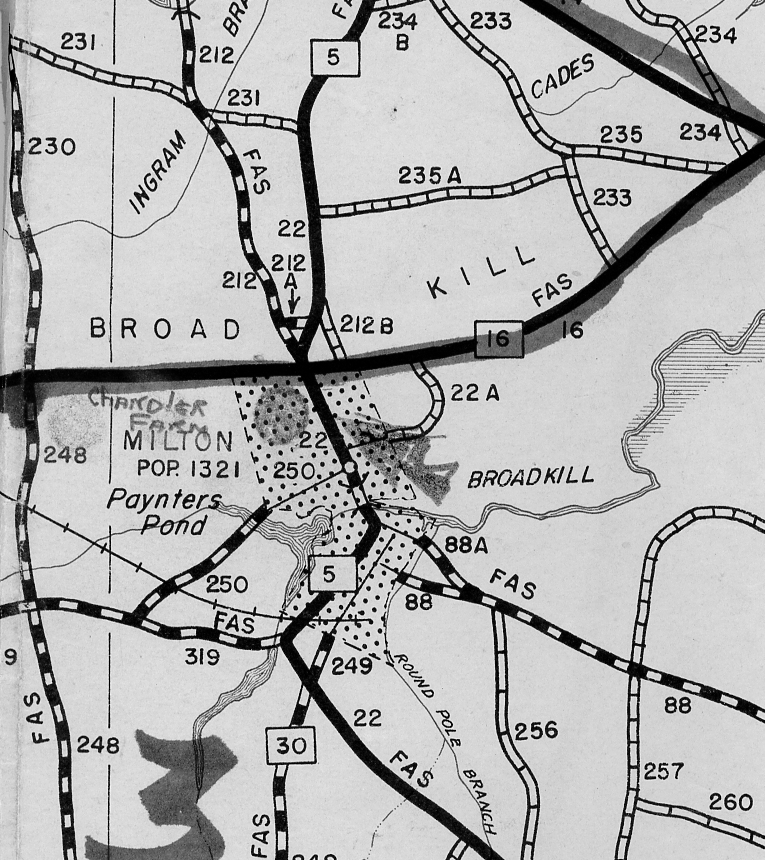
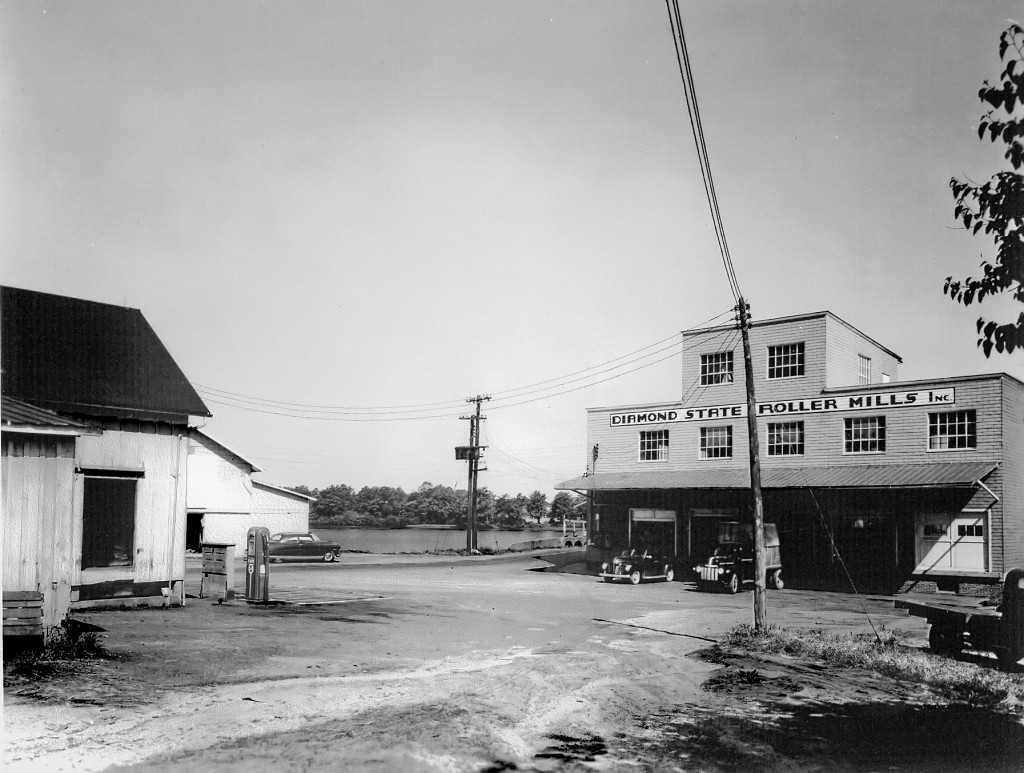
There is yet another name that appears in connection with the pond: “Lake Fanganzyki.” That name appears in only one context – David A. Conner’s Milton News letter in the Milford Chronicle, during his years as correspondent for that newspaper. There is no record of any such name in any deeds, land transfers, or other official documents or maps of the time. In fact, there is no reference to any person or place, real or imagined, anywhere with that name. Hancock and McCabe, authors of Milton’s First Century, believe that Conner is likely to have invented that name, just as he invented other honorifics and place names for Milton and Miltonians to suit his own sardonic style. I have no choice but to agree.

Thanks Phil, for another enlighting look at our Wagamon’s Pond. A special thanks also to Mr. Fred Pepper for access to his photos. WOW
REGARDS THE MILL POND ‘POND BY MANY A NAME’, I HAVE A MAP THAT INDICATES THE LOCATION OF THE POND, AND HAS THE NAME PAYNTER’S POND PRINTED IN. THE MAP HAS NO DATE THAT I CAN FIND. HARRISON HOWETH LEWES DELAWARE
Harrison, I would love to get a scan of that map you mentioned; there may be clues on it that could help us pin down the date. The Paynter family owned the first mill and the mill pond from the 1840’s through the end of the 19th century, so we are probably in that range, not later. Let me know if you could provide a scan; or I can come to your house with my scanner and do the job right there. The scanned image will be credited to you when I retrofit it to the post.
Having seen the map, dated 1953, it now seems to me that the name Paynter’s Pond persisted far longer than I thought. The posting has been updated to reflect that fact, with a portion of the map included. Thanks to Harrison Howeth for making the materials available to me.
An excellent story about Milton’s Mills, Phil. I lead the tours of old Abbott’s Mill and I always start outside, within plain sight of the millpond, and I remind visitors that there are no natural ponds in Delaware, and probably none in all of Delmarva. They were all created to supply a mill or mills with hydro-power.
Yes, that is true; Delaware is an odd state in terms of topographical features: flat as a pancake except way up north, full of water, but no natural ponds.
Phil,
May I reprint parts of this story in my blog, gristfromabbottsmill.net?
Every other week I write about Sussex county mills, slowly working my way down the coast from Milford.
I would certainly give credit for where it came from. Maybe you’ll pickup a few new readers.